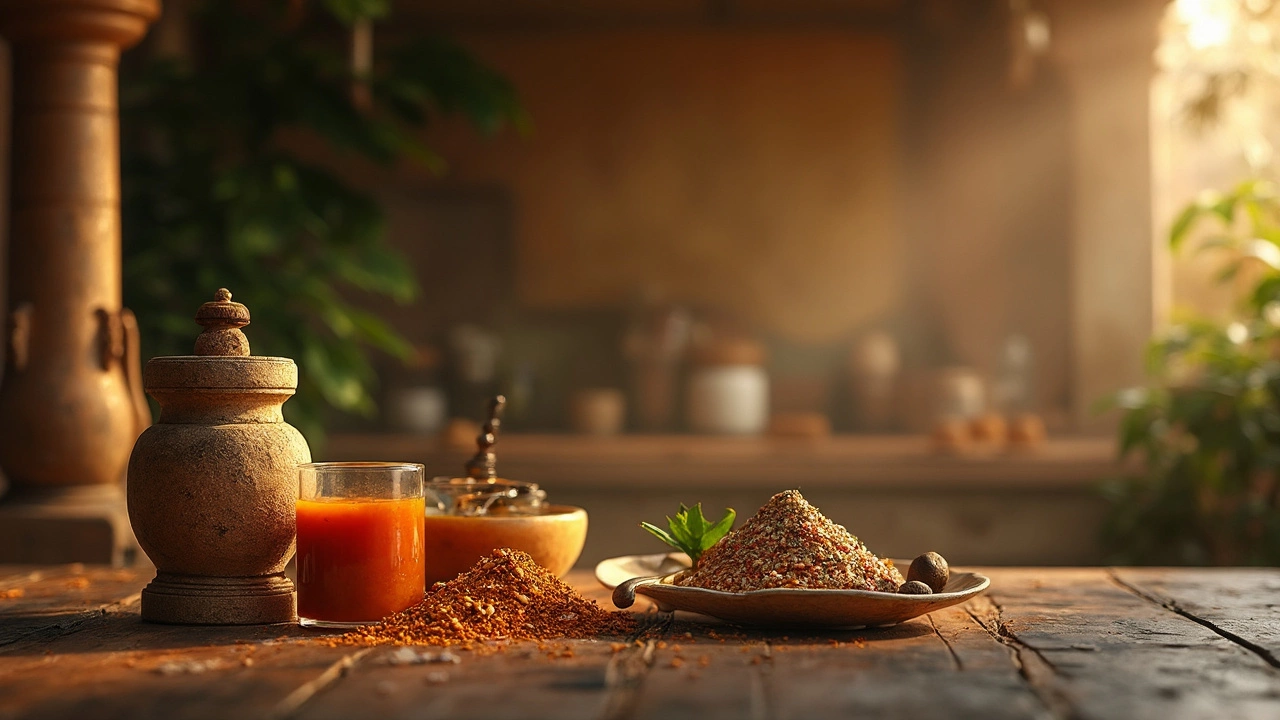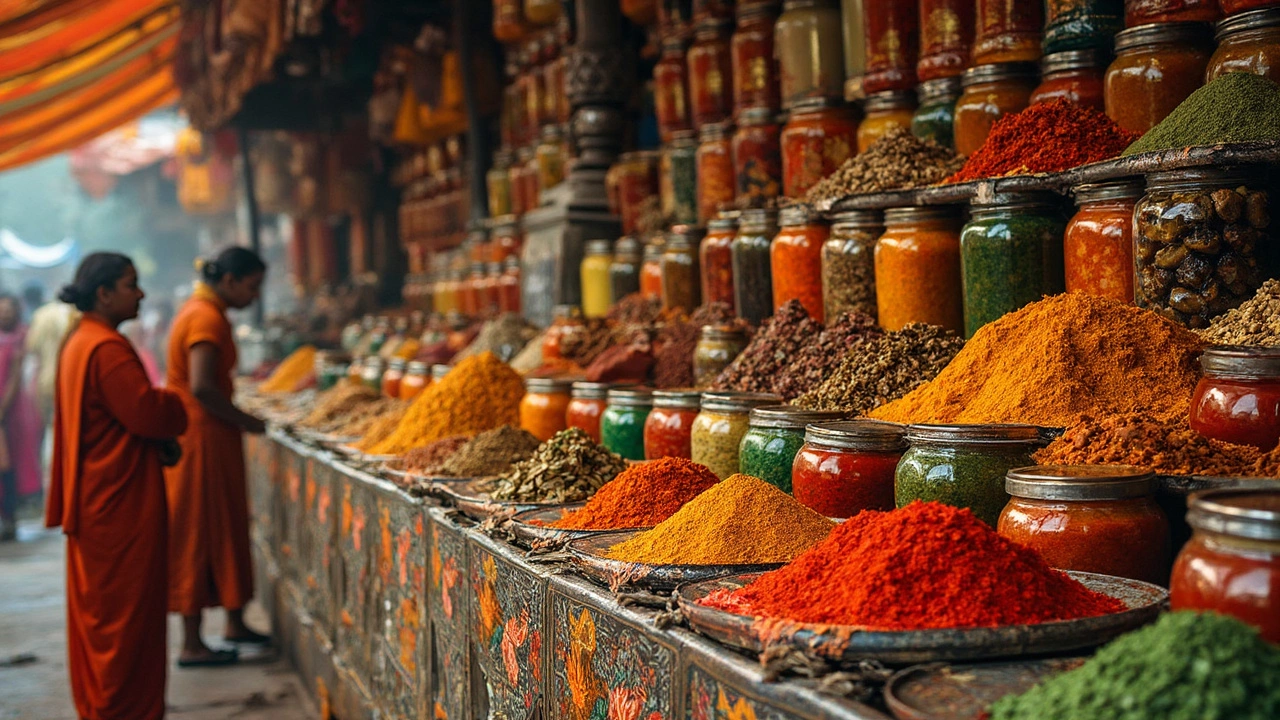Have you ever wondered why we call this tangy, spicy delight 'chutney'? Well, it's a fascinating story that mixes culture, language, and flavor in one delicious blend. It all started in India, where 'chatni' was a way to describe this beloved condiment.
But chutney isn't just one thing; it's a world of flavors! Depending on the region and ingredients, you might stumble across tomato chutney, mint chutney, or the popular mango chutney. Whether it's sweet, sour, or spicy, the basic idea remains: a mix of fruits, vegetables, spices, and herbs that brings life to any meal.
Creating your own chutney is a game-changer in the kitchen. It's super flexible—swap in different ingredients, adjust the spices, and make it your own. Plus, homemade chutney means you control what goes into your food, which is always a plus.
So, what is it about chutney that made it travel so far and wide? From its humble beginnings in Indian kitchens to becoming a favorite in British households, there's a spicy story here waiting to be told.
Origins of Chutney
The word 'chutney' comes from the Hindi word 'chatni', which means to lick or eat with appetite. This name fits perfectly because chutneys are often so tasty that you can’t help but want more. Historically, chutney originated in the Indian subcontinent as a way to enjoy fruits and spices all year round.
Back in the day, chutney was all about preserving. It was crafted using fruits, spices, and vinegar to ensure it would last, even in the heat. This made it a crucial part of the diet, especially when refrigeration wasn't an option. Early recipes included ingredients like tamarind, mint, cilantro, and even citrus fruits, mixed with spices to create bold flavors.
The British Influence
During the British colonial period, they noticed how delicious and versatile chutney was. They adopted it into their own cuisine, but with a twist. They added sugar, giving birth to sweeter variations like mango and apple chutneys that became household staples in England. Yes, that means the British really loved their chutney, enough to make it a part of their own culinary traditions.
One fun fact is that Major Grey’s Chutney, a popular version of mango chutney, is said to have been created by a British officer who wanted something a bit sweeter and fruitier than the traditional Indian versions. What's more, this version has found its way onto dining tables worldwide.
Cultural Spread and Evolution
As global trade expanded, so did the reach of chutney. New world ingredients started mixing up the recipes. Nowadays, you might find a tomato or cranberry chutney at your local market, showing just how far this humble dish has traveled. It’s not just in India or England anymore; the U.S. and other countries have fallen for its charm too.
Today, chutney isn't just confined to traditional styles. It’s present in fusion dishes and even on gourmet menus. That’s how you know you’ve got a timeless favorite!
Key Ingredients and Varieties
When we talk about chutney, ingredients and their combinations are endless. Honestly, it's like the canvas of the culinary world where fruits, veggies, and spices dance together.
Classic Ingredients
At the heart of many chutney recipes, you've got your basic stars:
- Tamarind: This sour fruit pulp is a must-have for many Indian chutneys.
- Mango: Whether raw or ripe, mangos give chutneys a tangy sweetness.
- Coconut: Common in South Indian varieties, coconut adds rich texture.
- Tomatoes and Onions: These are the usual suspects that bring both flavor and body.
Varieties Over the Globe
Some global chutney varieties have really made a mark! Let's look at a couple of them:
- Mango Chutney: Sweet, with notable spices like ginger and cumin, making it a Western favorite.
- Mint Chutney: Refreshing and herby, this one’s great with tandoori dishes.
- Coconut Chutney: With a coconut base mixed with green chilies and coriander, a staple in southern India.
Switching up the ingredients or spices can completely change the game, so feel free to experiment! And fun fact for those who appreciate data, a survey in 2023 found that 62% of people prefer fruit-based chutneys over other varieties.
Remember, the key here is to let your taste buds decide how far you go with the flavors. Whether it's spicy, sweet, or tangy, chutney plays by no rules!

Making Your Own Chutney
Embarking on the journey of creating your own chutney at home is not only super rewarding but also a seriously fun experiment with flavors. Let's break it down in simple steps so you can start whipping up your own batch today.
Understanding the Basics
Your chutney adventure begins with choosing the right ingredients. Think of fruits like mangoes or apples and veggies like tomatoes and onions. Pair these with spices such as cumin and coriander, and don't forget the kick from chilies or ginger. Remember, the fresher the ingredients, the better the flavor!
Step-by-Step Process
- Preparation: Chop your fruits and vegetables into small pieces. This ensures even cooking and allows the flavors to meld together seamlessly.
- Cooking: In a pan, heat oil and add your spices first. Once they're aromatic, toss in the chopped produce. Stir often to prevent sticking.
- Simmering: Add a touch of vinegar or lemon juice for that signature chutney tang. Let it simmer until everything softens and the mixture thickens.
- Storing: Once cooled, store your chutney in clean jars. It can last for weeks in the fridge, intensifying in flavor over time.
Flavor Tips
- Sweet and Spicy: Balance the sugar and spice levels according to your taste. It’s all about finding that perfect harmony.
- Experimentation: Switch up the spices or add nuts for texture. Personalize it to match your palate.
Chutney Myths Busted
Did you know that not all chutneys are red or green? They can be as colorful as the ingredients you choose. Plus, it's a myth that you need loads of sugar; many chutney recipes are quite adaptable. So don't hesitate to make adjustments to keep it healthy and exciting.
Chutney’s Cultural Journey
So, how did this awesome condiment we call chutney win hearts all around the world? The journey is as rich and vibrant as the flavors packed in a jar!
The Indian Origins
Starting from ancient India, chutneys took root as an essential part of meals. They served as a way to preserve fruits and spices while adding that much-needed zing to dishes. Chutney was not just food; it was a creative way to experiment with flavors using locally available ingredients.
Global Popularity
During the colonial era, British colonizers got their first taste of chutney, and let's just say it was love at first bite. They took these recipes back to Britain, adapting them to local ingredients and leading to creations like Major Grey’s mango chutney, which became especially popular.
Chutney Today
Nowadays, chutney isn't confined to Indian cuisine. It's a cross-cultural favorite, adding zest to dishes from sandwiches in the UK to charcuterie boards in the US. You’ll also find it across the Caribbean, known for their fiery versions packed with scotch bonnet peppers.
| Region | Common Chutney Type |
|---|---|
| India | Mint, Tamarind, Coconut |
| United Kingdom | Mango |
| Caribbean | Spicy Pepper |
Clearly, the allure of chutney transcends boundaries, making its way into diverse cuisines while keeping its essential character of being a burst of flavor that elevates any dish.
